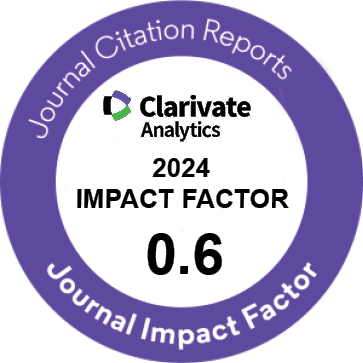| Original Article | |
| Comparison of Oocyte and Embryo Quality in Women With Polycystic Ovary Syndrome and the Control Group Candidate for In Vitro Fertilization and Intracytoplasmic Sperm Injection | |
| Malihe Afiat1, Nayere Khadem2, Elnaz Nayeri3, Roya Jalali3, Saeed Akhlaghi4, Elahe Akhgari3, Armin Attaranzadeh5, Fateme Borzoee6, Azade Khazaie5, Behnaz Souizi5 | |
| 1Department of Obstetrics and Gynecology, Faculty of Medicine, Milad Infertility Center, Mashhad University of Medical Sciences, Mashhad, Iran 2Department of Obstetrics and Gynecology, Women Health Research Center, Imam Reza Hospital, Mashhad University of Medical Sciences, Mashhad, Iran 3Department of Obstetrics and Gynecology, Faculty of Medicine, Mashhad University of Medical Sciences, Mashhad, Iran 4Department of Community Medicine, Mashhad University of Medical Sciences, Mashhad, Iran 5Milad Infertility Center, Mashhad University of Medical Sciences, Mashhad, Iran 6Department of Operating Room, School of Paramedics, Sabzevar University of Medical Sciences, Sabzevar, Iran |
|
|
IJWHR 2021; 9: 164-170 DOI: 10.15296/ijwhr.2021.31 Viewed : 3854 times Downloaded : 4147 times. Keywords : Polycystic ovary syndrome, Oocyte, Embryo, Intracytoplasmic sperm injection |
|
| Full Text(PDF) | Related Articles | |
| Abstract | |
Objectives: Polycystic ovary syndrome (PCOS) is the most common cause of female infertility. The aim of this study was to compare the oocyte and embryo quality between the PCOS women with the control group candidate for in vitro fertilization/intracytoplasmic sperm injection (IVF/ICSI). Materials and Methods: The present study was designed at the Infertility Research Center of Milad in the prospective cohort format and was carried out on 100 cases of infertile women with confirmed PCOS (case group) and the male factor (control group) as the first IVF cycle candidates. Both groups underwent the ovary stimulation cycle and ICSI under the standard antagonist protocol. The collected data were then processed and analyzed using the SPSS software, version 16. Results: The average age of study cases was 35 ± 3, and oocyte necrosis was the underlying pathological factor in both groups (28% and 26% in the PCOS and control groups, respectively). In addition, most embryones belonged to either grade 1 or 2 or were 8-cell embryos. Furthermore, the highest number of transferred embryos among the patients was related to the 8-cell and grade 1. The occurrences of biochemical pregnancy in the PCOS and control groups were up to 31.91% and 22%, respectively, leading to 72.73% and 60% childbirth in cases of both groups. Finally, there were no significant differences observed with respect to the quality and the quantity of the embryones, the oocyte, the transferred embryo, the germinal vesicle oocytes, and the rate of pregnancy among the two groups (P > 0.05). Conclusions: According to the results of the present study, no differences were found concerning the oocyte quality, embryo, and the pregnancy rate between PCOS cases and any other patients requiring ICSI. Therefore, such cases can similarly benefit from ICSI methods as well. |
Cite By, Google Scholar
Google Scholar
PubMed
Online Submission System
 IJWHR ENDNOTE ® Style
IJWHR ENDNOTE ® Style
 Tutorials
Tutorials
 Publication Charge
Women's Reproductive Health Research Center
About Journal
Publication Charge
Women's Reproductive Health Research Center
About Journal
Aras Part Medical International Press Editor-in-Chief
Arash Khaki
Mertihan Kurdoglu Deputy Editor
Zafer Akan























